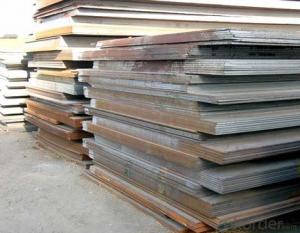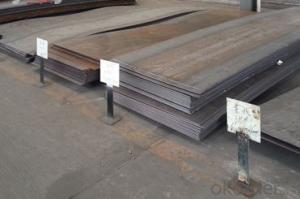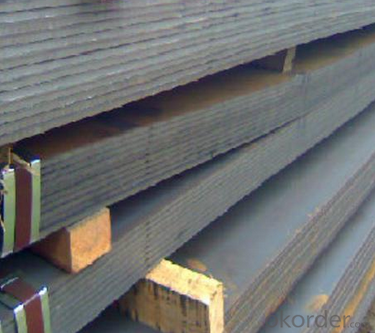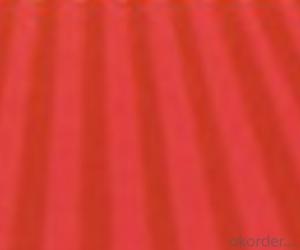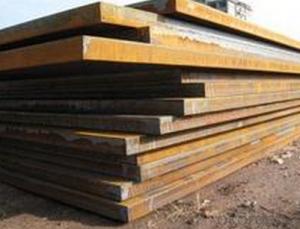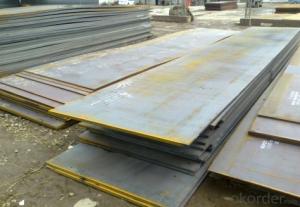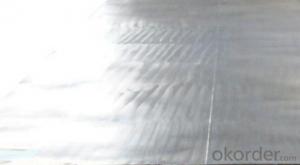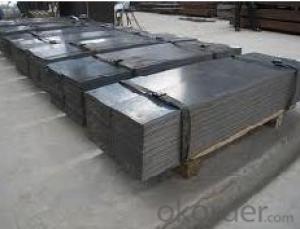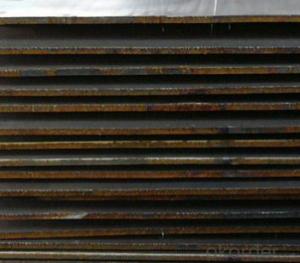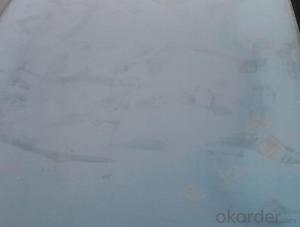Hot Rolled Carbon Steel Plate,Carbon Steel Sheet CCSB A36, CNBM
- Loading Port:
- Qingdao
- Payment Terms:
- TT OR LC
- Min Order Qty:
- 10 pc
- Supply Capability:
- 30 pc/month
OKorder Service Pledge
OKorder Financial Service
You Might Also Like
Quick Details
| Standard: | AISI, ASTM, GB, JIS | Grade: | Q195,Q235,Q345,A36,C45 | Thickness: | 1.0-30MM |
| Model Number: | Q235,Q195,Q345 | ||||
| Type: | Steel Plate | Technique: | Hot Rolled | Surface Treatment: | Coated |
| Application: | Ship Plate | Special Use: | Silicon Steel | Width: | 30-2000mm |
| Length: | as your requirement | standard: | hot rolled | Surface: | Anti-rust oil |
Packaging & Delivery
| Packaging Details: | seaworthy packages or as customers' require |
| Delivery Detail: | within 15 days after the advance payment |
Hot rolled steel plate
1 carbon steel plate 3mm thick General information
| Product name | Type | Specification | Implementation of GB | ||
| thick | wide | long | |||
| Carbon structural steel | Q195,Q215, Q235A,Q235B, Q235C,Q255, Q275 | 4-120 | 1500-4500 | 6000-12000 | GB/T700-2006 |
| Low-alloy structural steel | Q295,Q345A, Q345B,Q2345C | 4-120 | 1500-4500 | 6000-12000 | BG/T1591-1994 |
| Quality carbon structural stee | 30-50 | 4-120 | 1500-4500 | 6000-12000 | BG/T699-1999 |
| Ship steel | CCSA,CCSB | 4-120 | 1500-4500 | 6000-12000 | materials and welding condition |
| CCSAH32,CCSAH36 CCSDH32,CCSDH36 | 4-120 | 1500-4500 | 6000-12000 | materials and welding condition or GB 712-2000 | |
| Boiler steel | 20g,22Mng, 16Mng,19Mng | 4-120 | 1500-4500 | 6000-12000 | GB 713-1997 |
| Pressure vessel steel | 1622Mng,20R, 15MnVR,15MnVNR | 4-120 | 1500-2700 | 6000-12000 | GB 6654-1996 |
| European standard plate
| S235JR,S235J0, S275JR,S275J0, S275JR2,S355JR, S355J0,S355J2 | 4-120 | 1500-4500 | 6000-12000 | EN 10025 |
| Japanese standard plate | SS400,SS400-B | 4-120 | 1500-4500 | 6000-12000 | JIS G3101-2004 |
2 carbon steel plate 3mm thick detail specification
Material:
A283Gr.D/A573Gr.65,A516Gr65,A516Gr70,A284Gr.D
SS400,SS300,CCSB A36,A32,LRA32,LRB,Q235
Q195,Q235,Q345,SS400,ASTM A36,E235B
Thickness: 4mm-120mm
width: 1500mm-4500mm
Length:2-10m ,accordingly
Thickness | 4-120mm |
Width | 1500-4500mm or as custom's request |
Length | 2-12m,as your requirment |
Technique | Cold rolled or hot rolled |
Surface treatment | Bare, galvanized coated or as customer's requirements. |
Standard | ASTM,EN,GB,JIS,GB |
Material | A283Gr.D/A573Gr.65,A516Gr65,A516Gr70,A284Gr.D SS400,SS300,CCSB A36,A32,LRA32,LRB,Q235 Q195,Q235,Q345,SS400,ASTM A36,E235B |
Terms of Payment | L/C or T/T |
Chemical composition | C≤0.004%;Si≤0.030%; Mn ≤0.17%;P≤0.012%; S≤0.010%; Fe balance |
Delivery Detail | within 30days once receive deposite or confirm L/C |
Packing | Standard export packing,or as requirement |
3 carbon steel plate 3mm thick application:
construction,machinery manufacturing, container manufacturing, shipbuilding, bridge construction. Can also be used to manufacture a variety of containers, the furnace shell, furnace plate, bridge and vehicle static steel plate, low alloy steel plate,shipbuilding plate, boiler plate, pressure vessel plate, pattern plate, tractor parts, automobile frame steel plate and welding components
- Q: Can steel sheets be used for HVAC ductwork?
- Yes, steel sheets can be used for HVAC ductwork. Steel is a common material used in HVAC ductwork due to its durability, strength, and fire resistance properties. Steel sheets can be fabricated and shaped into ducts, providing a reliable and long-lasting solution for HVAC systems.
- Q: Are the steel sheets resistant to vibration or shock?
- Yes, steel sheets are generally resistant to vibration and shock. Steel is known for its high strength and durability, making it capable of withstanding external forces such as vibrations and shocks. The rigid nature of steel allows it to absorb and distribute the energy caused by vibrations or shocks, preventing any significant damage or deformation. Additionally, steel sheets are often used in applications where resistance to vibrations and shocks is crucial, such as in construction, automotive, and aerospace industries. However, it is important to note that the exact resistance of steel sheets to vibration or shock will depend on factors such as the thickness and quality of the steel used, as well as the specific magnitude and frequency of the vibrations or shocks.
- Q: How do steel sheets handle static electricity?
- Steel sheets are generally good conductors of electricity, including static electricity. This means that when static electricity is present, it will easily flow through the steel sheet and dissipate, reducing the likelihood of any buildup or discharge of static electricity.
- Q: What is the thermal conductivity of steel sheets?
- The thermal conductivity of steel sheets is typically around 50-60 W/m·K.
- Q: Can steel sheets be used in outdoor applications?
- Yes, steel sheets can be used in outdoor applications. Steel is a highly durable and weather-resistant material, making it suitable for various outdoor purposes such as roofing, siding, fencing, and construction projects. Its strength and resistance to corrosion make it an ideal choice for enduring harsh weather conditions and providing long-lasting performance.
- Q: Can steel sheets be used for storage tanks or containers?
- Yes, steel sheets can be used for storage tanks or containers. Steel is a durable and strong material that can withstand high pressure and is resistant to corrosion, making it suitable for storing various substances. Additionally, steel sheets can be easily shaped and welded to create custom-sized storage tanks or containers based on specific requirements.
- Q: What are the safety precautions for handling steel sheets?
- Some safety precautions for handling steel sheets include wearing appropriate personal protective equipment such as gloves and safety glasses to protect against cuts and flying debris. It is also important to lift and handle the sheets using proper lifting techniques and equipment to avoid back injuries. Additionally, ensuring that the work area is clear of any obstacles or tripping hazards can help prevent accidents.
- Q: Can steel sheets be used for making staircases?
- Staircases can indeed be made using steel sheets. Steel, being a robust and long-lasting material, is capable of withstanding significant weights, making it ideal for constructing staircases. By utilizing steel sheets, staircases are provided with a secure base and structural soundness, thereby guaranteeing both safety and durability. Moreover, steel allows for effortless shaping and molding into diverse designs, enabling a wide range of options for staircase aesthetics. Whether for residential, commercial, or industrial purposes, steel sheets are highly favored in the construction of staircases due to their exceptional strength, durability, and adaptability.
- Q: What is a water stop steel plate?
- The joint position is called the new and old concrete construction joints, the waterproof concrete belongs to the weak links, increase the sealing plate, the water along the slit Jiecha position of the new and old concrete permeability met when the sealing plate can not leaking, sealing steel plays a role to cut off the water penetration path. In time, the steel plate is penetrated along the gap between the water stopping steel plate and the concrete, and the water stopping steel plate has a certain width, and the seepage path of the water is prolonged, and the utility model can also play a waterproof role.
- Q: Are steel sheets available in different patterns or textures?
- Indeed, one can find steel sheets in a multitude of patterns and textures. Although conventional steel sheets possess a smooth and unadorned appearance, there exists a wide array of alternatives featuring diverse patterns and textures. These patterns can be skillfully embossed, delicately etched, or expertly brushed onto the surface of the steel, thereby enhancing its aesthetic appeal. Some frequently encountered patterns include diamond, checker, or grid patterns, while textures can range from a subdued and velvety matte finish to a more lustrous and reflective surface. The availability of these diverse patterns and textures bestows upon designers a greater degree of flexibility, rendering them suitable for a myriad of applications, such as architectural endeavors, interior design projects, or ornamental components in furniture and fixtures.
Send your message to us
Hot Rolled Carbon Steel Plate,Carbon Steel Sheet CCSB A36, CNBM
- Loading Port:
- Qingdao
- Payment Terms:
- TT OR LC
- Min Order Qty:
- 10 pc
- Supply Capability:
- 30 pc/month
OKorder Service Pledge
OKorder Financial Service
Similar products
Hot products
Hot Searches
Related keywords
